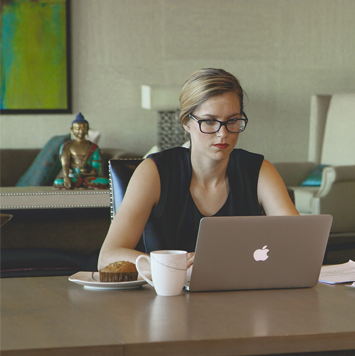Avoid Traps of Sedentary Work and Lifestyle

Through history, a humans' lifestyle has changed a lot. For example, let's take a look at the habits of UK citizens for the past 50 years. Research reveals that on average the time spent in physical activity dropped from about 220 MET-hours to approximately 150 MET-hours per week. On the other hand the number of hours spent sedentary in one week increased from approximately 30 to over 50.
At the same time the consumption of food high in calories increased on average. And here comes the first health problem, caused by sedentary lifestyle – being overweight or even obesity.
Other Negative Effects of Sedentary Lifestyle
Along with being overweight or obese also come other inconveniences, such as high blood pressure, unbalanced cholesterol levels, and cardiovascular diseases. We can avoid these by losing weight in a healthy way by adopting healthy sports and nutritional habits.
But there is another common issue of modern sedentary lifestyle – the back issue. Have you ever wondered where does all that back pain experienced by 2 out of 3 people come from? In most cases it is caused by bad posture, lack of flexibility in hip region, and lack of core stability and strength.
What Can Be Done to Prevent Back Pain?
When sitting, we are supposed to keep the correct posture, but our torso muscles get tired soon and all the forces get transferred to the so called "passive structures" (e.g. spine). The long-term loads of these stresses cause material degeneration. As we get older, we feel more and more pain, caused by irreversible changes in our spinal vertebras. One part of these changes come with age and is caused by natural changes in our bodies, but the other comes from wrong posture. We can prevent back-pain by:
- setting the desk up properly,
- keeping the spine strengthened in its natural position while sitting,
- lifting the desk and standing during work,
- stretching your hip joint,
- getting enough core-strengthening workout,
- learning three steps to a good posture.
Three Steps to a Good Posture
In conclusion, let me suggest the simple routine of three steps to a good posture that I am usually presenting on the Anti-Stress workshops and Dates with Health. Here are the instructions:
1. Squeeze your butt.
2. Take a deep breath and activate your abdominal muscles.
3. Slightly rotate your shoulders backwards.
Remember, this is a reminder of which muscles should be activated not a strengthening exercise, so there is no need to activate your muscles maximally. Change position frequently and avoid positions where your spine is loaded unnaturally.